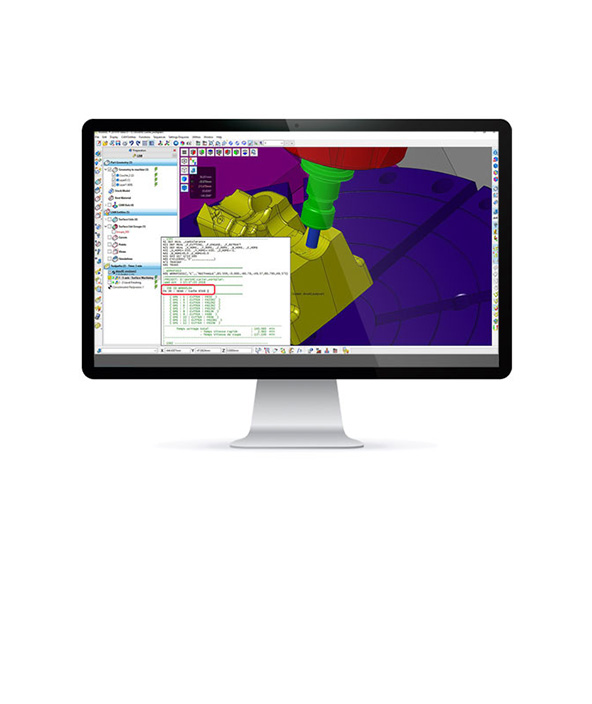Different cutting speeds on same RADAN nests for beach
Tooling programmed at part level gives better cut flexibility
Contact us

“One of the nicest things about RADAN is that we can program tooling at the part level.” Those are the words of Scheduler and Programmer Sue Conley, of Beach Manufacturing Company (BMC).
“I like this flexibility because, depending on the characteristics of the individual part, it may cut better at a different speed than another one cut on the same material. This ensures that parts set up to cut at different speeds will all cut well when nested on the same sheet.”
Based in Donnelsville, Ohio, BCM is a thriving family business operating from six facilities. supplying parts to large truck, bus and military organisations, as well as the agricultural industry and other commercial and consumer markets.
Among those products are parts such as grab handles, seat frames, clutch rods and mounting brackets. BMC also assembles complex components and sub-components, including vehicle seating, complete mirror systems, and a multitude of heavy truck parts.
“We contribute to our customers’ success with the highest quality and most cost-effective processes in the industry, and we take great pride in contributing to the future success of each customer by consistently offering quality products and services,” says Sue Conley, who programs two Mazak lasers and two Accurpress press brakes at BMC.
In addition to manufacturing expertise, BMC offers design services, and counts talented engineers among its team. Jobs range from custom work to large production runs, which makes for a diverse and challenging shop floor.
BMC invested in its first laser and air-bending press brakes in 2013, when it also acquired the RADAN sheetmetal CAD/CAM, to program the new equipment. While RADAN is used by BMC to program the laser, its specialised bending solution, Radbend, is used to drive the press brakes.
“We have one Mazak Optiplex 3015 II laser, one Mazak Optiplex 3015 Fiber II laser, and two Accurpress air-bending press brakes — all of which work fluidly with RADAN and Radbend,” she says. “Within the company, we also have a variety of presses for bending, die stamping and forming. We do robotic welding at one location, build truck mirrors at another, and paint our finished parts at yet another facility. We’re just a well-rounded truck components supplier.”
Parts at BMC are made in aluminum and various steels, and jobs range from smaller, very custom projects to larger production runs.
As well as programming tooling at part level to allow different cutting speeds on the same nest, the solution’s flexibility extends to its general nesting capabilities, as users are able to edit automatically generated nests if desired. Part and parcel of creating efficient nests for maximum material yield is RADAN’s ability to analyse the true shape, material, and thickness of all parts in a batch. Separating and sorting automatically, RADAN generates manufacturable nests from sheets, off-cuts and remnants to improve sheet utilisation and overall efficiency.
“RADAN’s nesting software helps us select the best option for obtaining the highest yield of production parts with the least amount of time and material,” Sue Conley says.
“Once a part has been through the production process and been tooled to cut successfully, the nesting of each part becomes very simple and easy to do, saving us considerable programming time.”
She uses Radbend’s offline programming and simulation capabilities to plan BMC’s jobs before they get to the press brake. The solution offers several automated functions, including automatic bend sequencing, tool selection, and finger-stop positioning. It also delivers tool setup optimisation and customisable reports.
“My favourite thing about Radbend is that we can try all different tool combinations before putting a part on the press brake. This cuts the amount of scrap we create during setup through trial and error. It also helps keep our operators safe because we can see which tooling works best when running the software. It lets us switch tooling with ease, and notifies us if the tonnage is exceeded by the tools selected.”
BMC has taken the simulation capabilities a step further by using virtual models of its press brakes, which Sue Conley uses to plan jobs during the simulation process. The company’s two press brakes differ in size and the larger of the two is used most frequently. However, there are jobs that are a better fit for the smaller of the two brakes, even when the tooling works perfectly.
“Radbend shows that the part will touch or hit the clamps on the larger press, but run clear on the smaller during the bending process. So, although the tooling works fine, the features of the press itself get in the way,” she explains. “RADAN built virtual models of our presses, and the software shows all of the details of the press during the bending process, so we can see the collision on the screen rather than discovering it on the press.”
With RADAN, BMC also gained the ability to run its lasers unattended and currently earmarks programs for either attended or lights-out production. “Our lasers run almost 24 hours a day. We set up programs which we call ‘day runners.’ and programs for lights out. RADAN makes creating these different programs for the same parts simple and easy to do.”
She says BMC was willing to embrace the new technologies offered by both machinery and software — and even ventured into untested waters, emerging a stronger and more efficient competitor. “We were amongst the first RADAN customers to combine two types of lasers under the same software package, our CO2 and our fiber. During the installation of our fiber-optic laser, we also upgraded the software on our CO2 from using prep subs to tech tables. RADAN was there to aid in the installation of this new software, and together we were able to work out the bugs quickly without causing down-time in production.”
